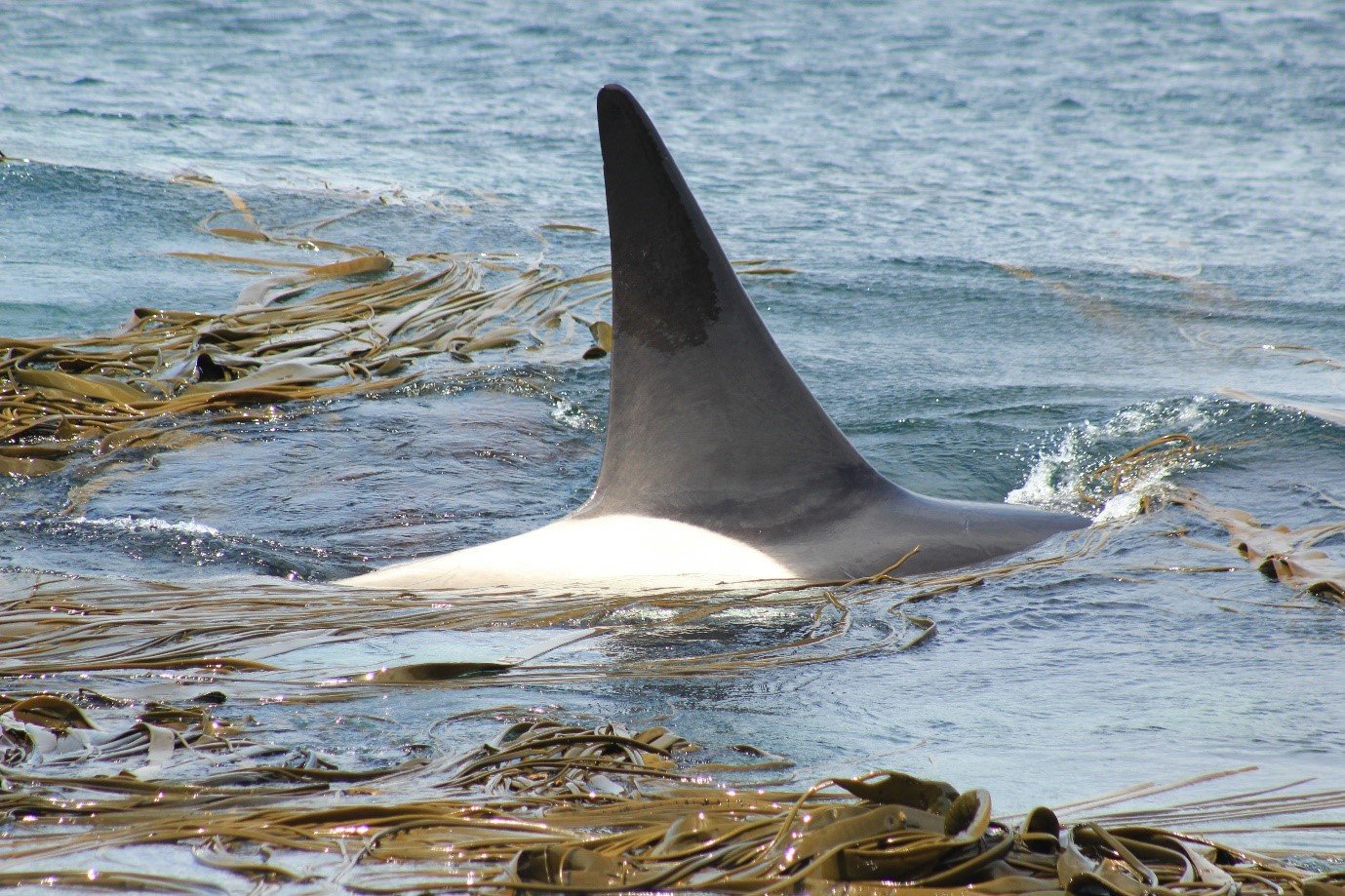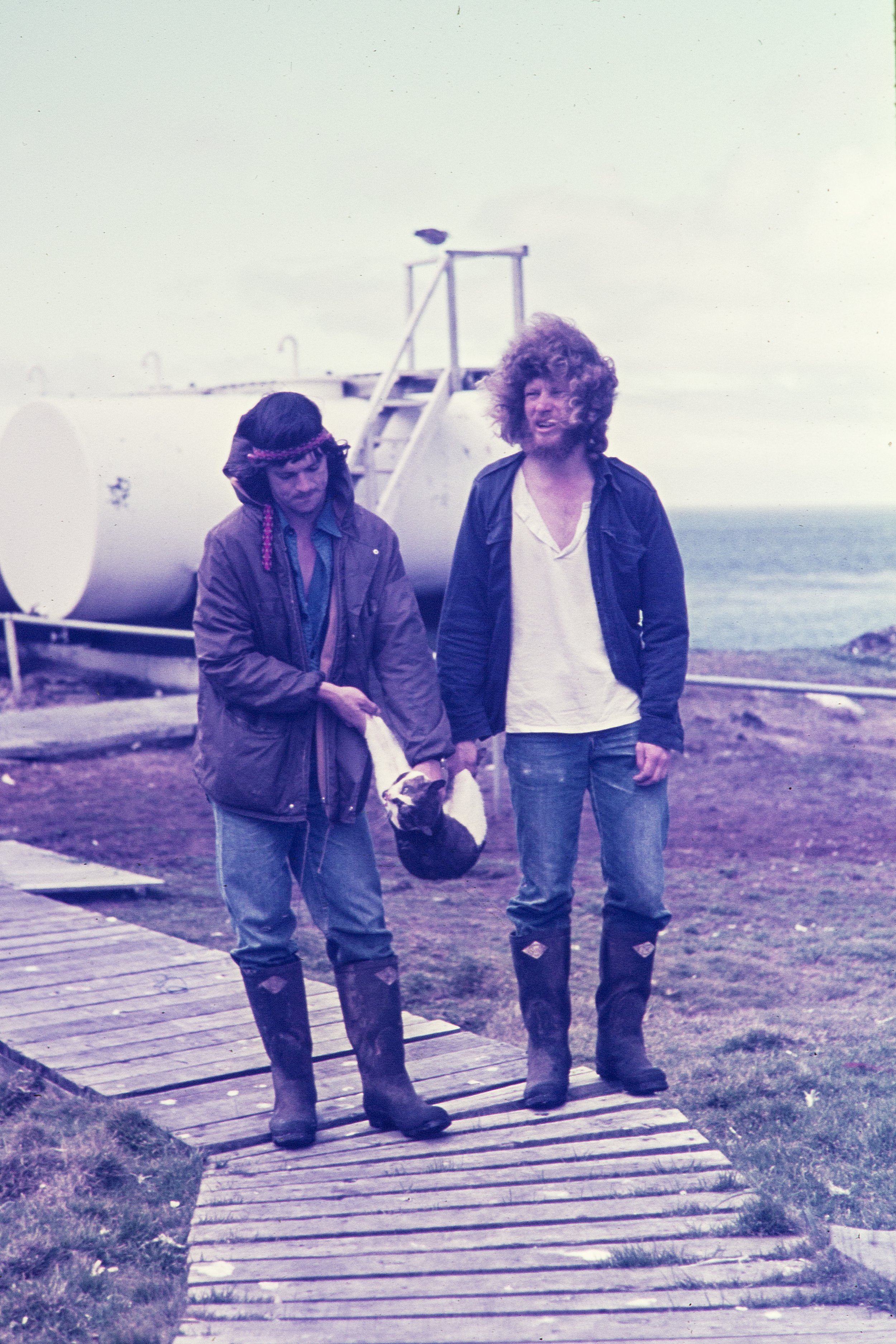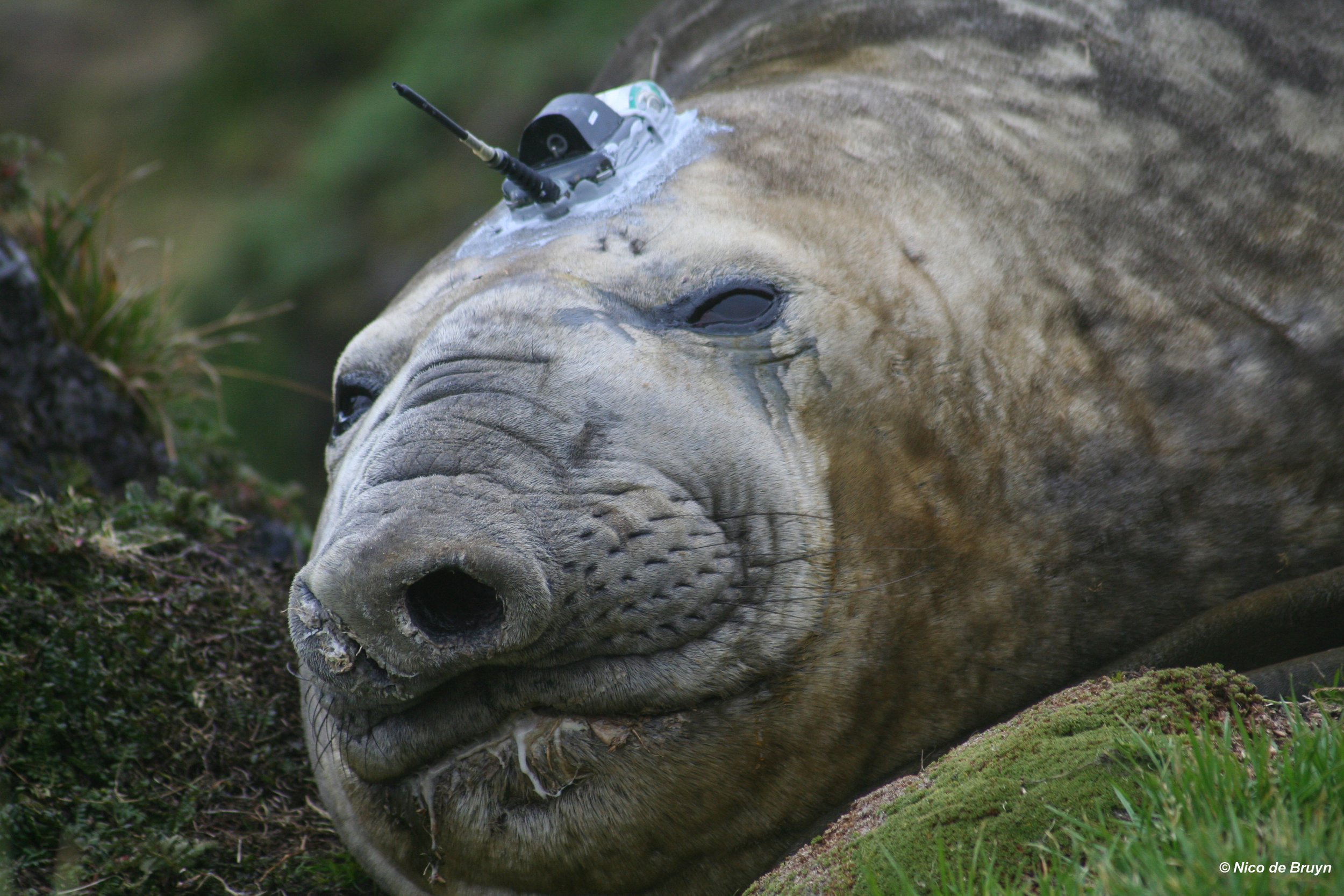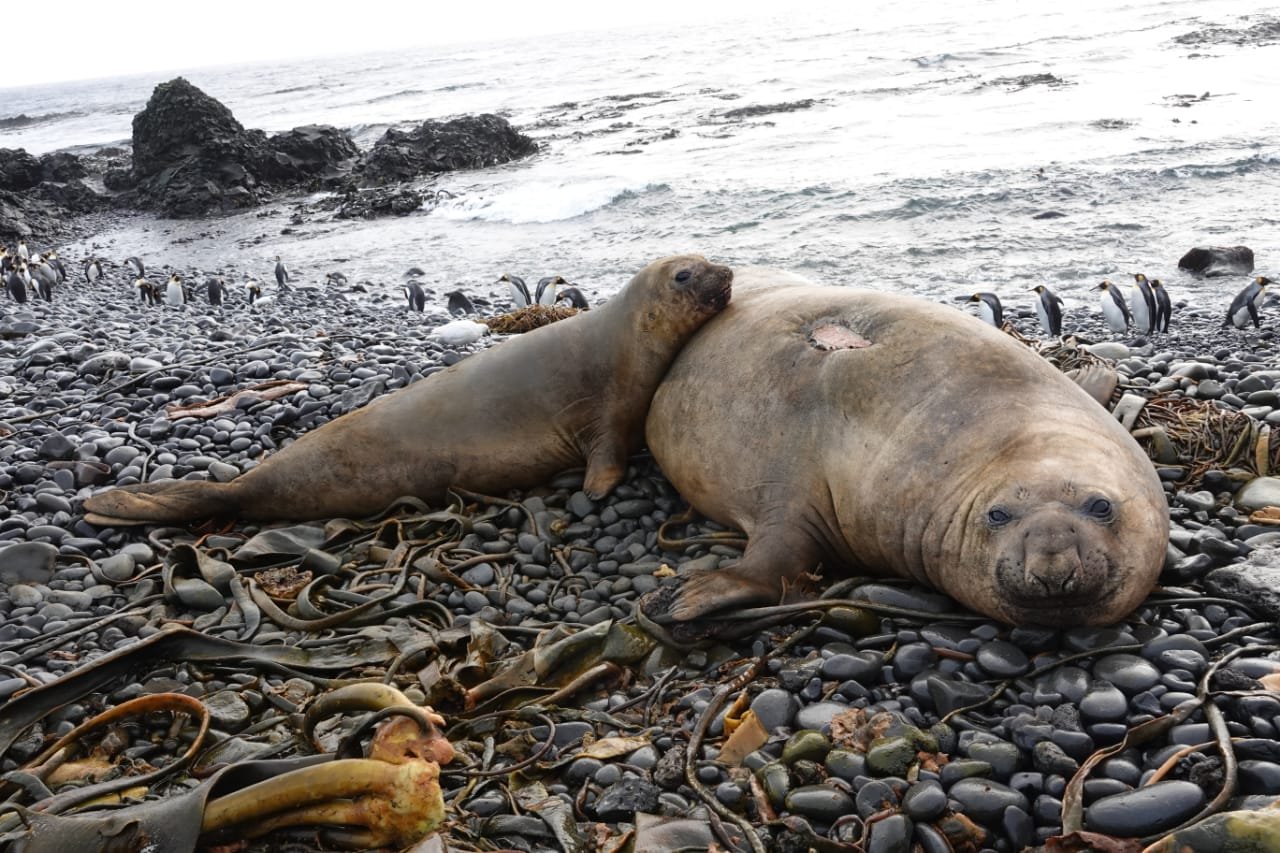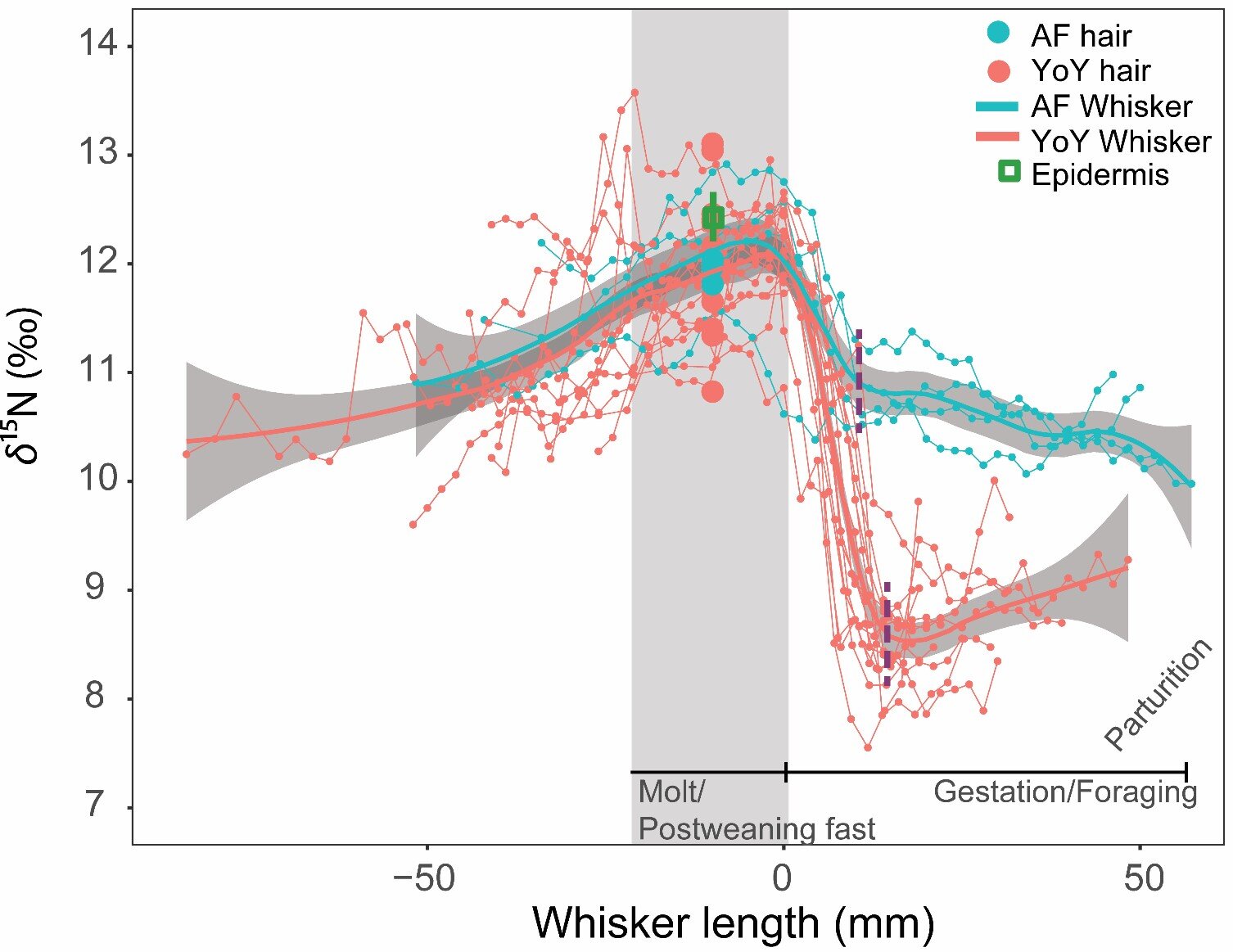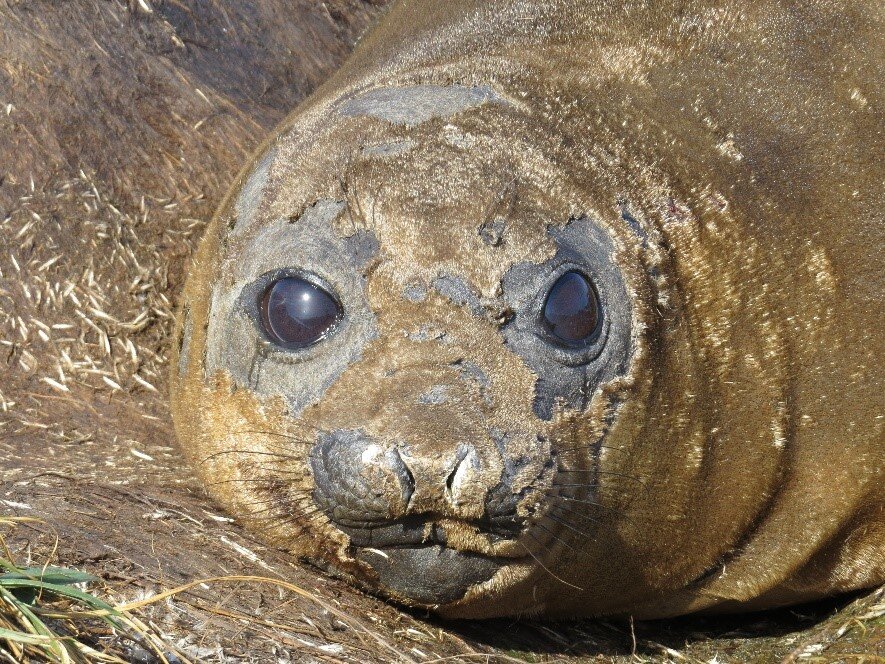For some reason I woke up at 5:30 am, and given I’m a morning lark, I decided to make the most of my alertness and get stuck into this blog post. After an hour of writing, I packed the last few items into my bag. I was scheduled to finish up censusing elephant seals just north of base, but planned to return to base in the afternoon, so my bag wasn’t too full. I packed my notebook and pencil, waterproof slate (for when it invariably starts raining), binoculars, PG camera (more on this later), tags for foreign seals and tag applicators, waterproof pants and rain jacket, PLB (personal locator beacon in case of emergency), personal camera, a flask full of tea and snacks (you can never have too many, but you can certainly have too few – a most unpleasant experience). I quickly ate breakfast, signed out on the register (so people could locate me if I didn’t come back) and left just before 8 am.
I decided to walk to the furthest point and census the beaches on the way back. The weather teased me – it was sunny over the interior, but I was walking in a soft drizzle, a classic Marion soft, subtle soaker. Nevertheless I enjoyed the 1h30 hour walk to Blue Petrel Bay to the north of base, and marveled at the growing Wandering Albatross chicks and Giant Petrels I spotted along the way. Sometimes I take these sights for granted, but am quickly reminded of how lucky I am when I take a moment to reflect that “I’M ON MARION FREAKING ISLAND” (a direct quotation I discovered on the inside of one of the hut doors which seems particularly apt). At Blue Petrel Bay my work for the day began in earnest.
The beaches are relatively quiet at the moment, with most of the seals fattening themselves up in the ocean before the breeding season. As a result, census went quickly. I came across many tagged seals and recorded their tag colour and number. The highlight was seeing my first Red White (Red White 029), an eight year old male who was tagged in 2014. So far we haven’t seen many fully grown adults, but they are sure to be on their way as breeding season approaches. I proceeded to PG the Red White. Essentially you take multiple photographs of the animal from different angles and combine all these images to produce a 3D depiction of the animal, which can then be used to estimate the animal’s weight. Effectively you can weigh a multiple ton elephant seal with one finger. There are nine beaches between Blue Petrel Bay and base, some with multiple divisions, and I checked them all, encountering 84 seals. Unfortunately I didn’t see any killer whales during my census, but I did briefly stop to admire the view from the top of one of the beaches called Ship’s Cove. Just before I reached base, I stopped to check in with Monica (M79 sealer focused on killer whales), who was at Kill Point, on the lookout for killer whales. By 2:30pm I was back at base.










